55 Fascinating World Facts You Need to Know
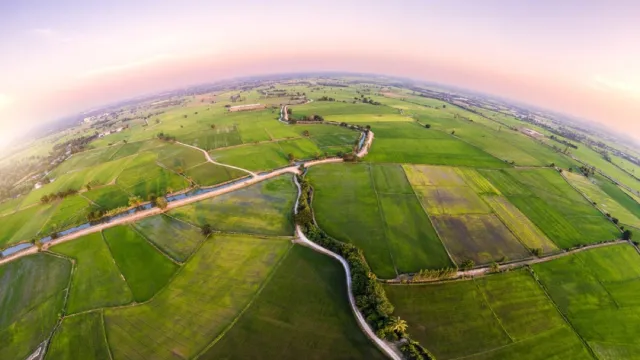
With around 200 countries and more than 7.8 billion people (plus plants, animals, and other organisms), the world is full of interesting, fun, and fascinating facts. In the land of the Kiwis, for instance, you’ll find the highest concentration of pet owners on the planet. And over in Nicaragua, you’ll encounter one of the only two flags in the world to feature the color purple. Hungry for more world facts? Read on to learn some interesting trivia about the Earth’s past, present, and future.
READ THIS NEXT: 175 Random Facts So Interesting You’ll Say, “OMG!”
1. Glaciers and ice sheets hold about 69 percent of the world’s freshwater.
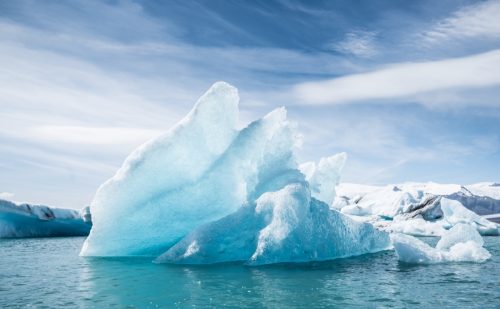
Just over 96 percent of the total amount of the world’s water is held in its oceans, according to Water in Crisis: A Guide to the World’s Fresh Water Resources via the United States Geological Survey (USGS). However, that’s primarily saltwater.
To find the bulk of the world’s freshwater, you need to trek to the poles, as 68.7 percent of it is encased in ice caps, permanent snow, and glaciers.
2. The fastest gust of wind ever recorded on Earth was 253 miles per hour.

Hang on to your hats because this isn’t your average wind storm. In 1996, a tropical cyclone named Olivia hit off the coast of Barrow Island, Australia with such force that it broke an incredible record.
According to The Weather Channel, “Olivia’s eyewall produced five extreme three-second wind gusts, the peak of which was a 253 mph gust,” which blew past the previous wind record of 231 mph set in Mount Washington, New Hampshire back in 1934.
3. Recent droughts in Europe were the worst in 2,100 years.
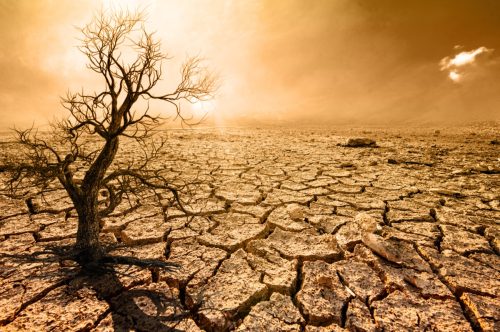
Europe has been experiencing serious dry spells and extreme heat since 2015, which has caused major droughts. Research done led by the University of Cambridge (and published on the National Centers for Environmental Information website) looked at isotopes in the rings of old European Oak trees in Central Europe which formed over thousands of years to try to pin down the cause.
They discovered that the dry spells are a “result of human-caused climate change and associated shifts in the jet stream,” per EurekaAlert!
4. The best place in the world to see rainbows is in Hawaii.
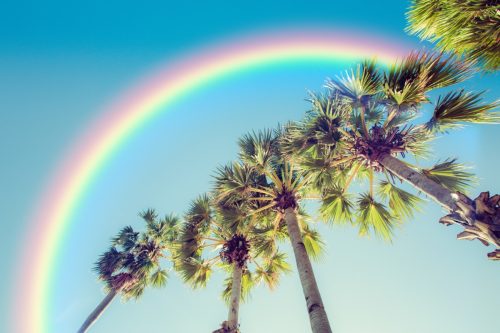
If you’re an avid rainbow gazer and want to get your fill of the beautiful phenomenon, look no further than the state of Hawaii.
A 2021 study published by the American Meteorological Society noted that the area’s “mountains produce sharp gradients in clouds and rainfall, which are key to abundant rainbow sightings.” Air pollution, pollen, and a large amount of cresting waves also help to put Hawaii at the top of the list when it comes to rainbow quantity and quality.
5. There are fossilized plants in Greenland under 1.4 km of ice.

Around 80 percent of Greenland is covered by the Greenland Ice Sheet, which Britannica explains is the “largest and possibly the only relic of the Pleistocene glaciations in the Northern Hemisphere.”
But has it always been so icy? Well, at the bottom of a 1.4 km core sample, which was taken in 1966 at Camp Century, researchers found “well-preserved fossil plants and biomolecules,” which means that the massive sheet melted and reformed at least once in the last million years. Brrrrr!
6. Whale songs can be used to map out the ocean floor.

Fin whales are basically the Barry White of the ocean. The deep, bellowing songs that males use to attract mates are considered to be the loudest of all marine life and can be “heard up to 1,000 kilometers (600 miles) away,” according to Scientific American. They can also be used to sonically map out the ocean floor thanks to the fact that the sound can reach depths of 2.5 kilometers (1.6 miles) under the water, which bounces back and provides researchers with accurate measurements.
Beyond that, a 2021 study published in Science showed how using a fin whale’s song can be far more useful and have less of a negative impact on sea life than using a large air gun, which is the typical tool researchers rely on.
7. New creatures have been found in deep-sea volcanoes.

Finding previously undiscovered organisms in the depths of the ocean may sound like something straight out of a sci-fi horror film, but a 2020 study of a deep-sea volcano near New Zealand, published in Proceedings of the National Academy of Sciences of the United States of America, uncovered “over 90 putative bacterial and archaeal genomic families and nearly 300 previously unknown genera.”
Some research has linked hydrothermal vents, like deep-sea volcanoes, to the “origin of life.” So are we looking at the early signs of future land-dwellers? We’ll have to wait and see.
8. Mount Everest is bigger now than the last time it was measured.
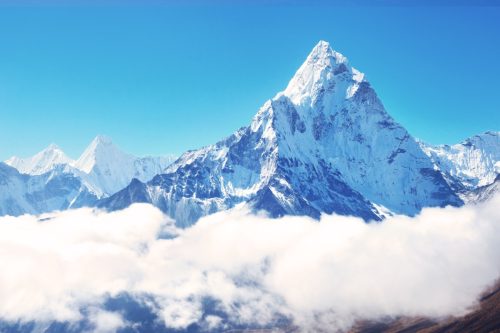
Mount Everest may not have physically grown, having reached maturity a long time ago, but the most recent measurement performed by surveyors representing China and Nepal has the mountain peak standing taller than we’d thought in the past.
Previous readings have ranged from 29,002 feet above sea level in 1856 down to 20,029 in 1955, according to NPR. After the long process of measuring the mountain with GPS devices, however, experts have now stated that Mount Everest stands at a whopping 29,031.69 feet, due to plate tectonics.
9. Climate change is causing flowers to change color.

Don’t worry, your prized red roses aren’t going to turn turquoise overnight, but an increase in UV radiation due to the ozone layer deteriorating over the past decades has caused flowers all over the globe to change.
A 2020 study led by Clemson University scientists determined that the UV pigmentation in flowers has increased over time which has led to the degradation of their pollen. Although we can’t see the color change with our eyes, it is a big problem for pollinators like bees who are attracted to the bright colors that flowers produce.
READ THIS NEXT: 70 Wonderfully Weird Facts That Will Make You Question Everything.
10. Dentistry is the oldest profession in the world.

Dentistry goes all the way back to when humans first had teeth… well, not quite that long. However, one study found evidence of teeth being drilled in skulls that dates from 7,500 to 9,000 years ago. The holes were likely made using a prehistoric bow drill. Could that be the work of the first dentist?
Other biting research conducted by the University of Bologna, Italy on a 14,000-year-old skull found that “one rotten tooth in the jaw had been deliberately scoured and scraped with a tool.” That makes dentistry one of the oldest recorded professions and is definitely a reason to smile.
11. North Korea and Cuba aren’t the only places you can’t buy Coca-Cola.

No matter where you go, it’s comforting to know you can always enjoy a Coca-Cola. Well, almost anywhere. While this fizzy drink is sold practically everywhere, it still hasn’t (officially) made its way to North Korea or Cuba, according to the BBC. That’s because these countries are under long-term U.S. trade embargoes.
In 2022, another country made it onto the list. Following its invasion of Ukraine, the Coca-Cola Company announced that it would be suspending business in Russia. The company finalized its exit from the world’s largest country just five months after the war began.
12. There are more twins now than ever before.

You might think twins are a rarity, but they’re actually becoming more common than ever.
“From about 1915, when the statistical record begins, until 1980, about one in every 50 babies born was a twin, a rate of 2 percent,” writes Alexis C. Madrigal of The Atlantic. “Then, the rate began to increase: by 1995, it was 2.5 percent. The rate surpassed 3 percent in 2001 and hit 3.3 percent in 2010. [That means] one out of every 30 babies born is a twin.”
Scientists believe this trend is due to the fact that older women tend to have more twins, and women are choosing to start families later. Fertility treatments such as in-vitro fertilization likely also play a role.
13. The hottest chili pepper in the world is so hot it could kill you.

The “weapons-grade” Dragon’s Breath chili pepper is so hot it’s downright deadly. If you ate one, it could potentially cause a type of anaphylactic shock, burning your airways and closing them up.
“I’ve tried it on the tip of my tongue and it just burned and burned,” Mike Smith, the hobby grower who invented the Dragon’s Breath along with scientists from Nottingham University, told Live Science.
So why make such an impractical pepper? As it turns out, the chili was initially developed to be used in medical treatment as an anesthetic that can numb the skin.
14. France is the world’s most visited country.

France is a beautiful country, filled to the brim with delicious wines, scrumptious cheese, and tons of romance. So it’s no surprise that more people want to visit France than any other country in the world, according to the United Nations World Tourism Organization.
In 2017, the European country welcomed 86.9 million people. Spain was the second-most popular destination with 81.8 million visitors, followed by the United States (76.9 million), China (60.7 million), and Italy (58.3 million). La vie est belle!
15. The world’s most densely populated island is the size of two soccer fields.
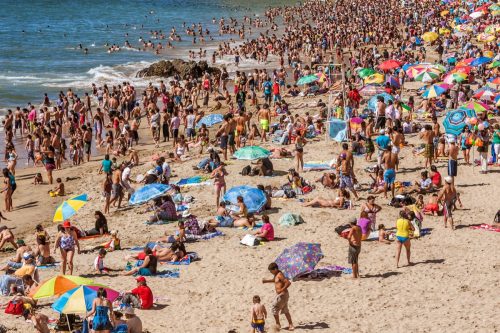
Santa Cruz del Islote in the Archipelago of San Bernardo off the coast of Colombia may only be about the size of two soccer fields (two acres), but the artificial island has four main streets and 10 neighborhoods. Five hundred people live on the island in around 155 houses.
With so many people packed into such a small space, it’s the most densely populated island in the world, according to The Guardian.
16. The Canary Islands are named after dogs, not birds.
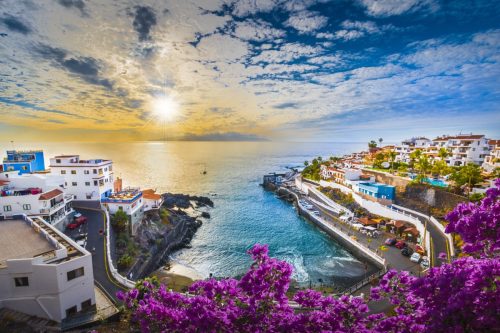
It might seem safe to assume that the Canary Islands were named after canary birds, but the location was actually named after a different animal. Although it’s off the coast of northwestern Africa, the archipelago is actually part of Spain.
In Spanish, the area’s name is Islas Canarias, which comes from the Latin phrase Canariae Insulae for “island of dogs.”
17. Indonesia is home to some of the shortest people in the world.

Though there are short people and tall people everywhere, Indonesia is home to some of the shortest people in the world, according to data compiled from various global sources by the Telegraph in 2017.
When taking both genders into account, the average adult is around 5 feet, 1.8 inches. People in Bolivia don’t tend to be much taller, with an average adult height of 5 feet, 2.4 inches. The tallest people among us live in the Netherlands, where the average adult height is 6 feet.
18. The Paris Agreement on climate change was signed by the largest number of countries ever in one day.

When 174 world leaders signed the Paris Agreement on Earth Day in 2016 at the United Nations (UN) headquarters in New York, it was the largest number of countries ever to come together to sign anything on a single day. The agreement aims to combat climate change and accelerate and intensify the actions and investments needed to strengthen the global climate effort.
19. The world’s quietest room is located at Microsoft’s headquarters in Washington state.

Silence is golden, as they say. And while it may not be worth quite as much as jewels and gold to most people, it certainly was the primary goal for those who built the quietest room in the world.
Located at Microsoft’s headquarters in Redmond, Washington, the lab room measures a background noise of -20.35 dBA, which is 20 decibels below the threshold of human hearing and breaks previous records for spaces that were deemed the planet’s quietest places, according to CNN.
“As soon as one enters the room, one immediately feels a strange and unique sensation which is hard to describe,” Hundraj Gopal, a speech and hearing scientist and principal designer of the anechoic chamber at Microsoft, told CNN. “Most people find the absence of sound deafening, feel a sense of fullness in the ears, or some ringing. Very faint sounds become audible because the ambient noise is exceptionally low. When you turn your head, you can hear that motion. You can hear yourself breathing and it sounds somewhat loud.”
20. There’s only one country in the world that doesn’t use the metric system.

For simplicity’s sake, most of the more than 200 countries in the world use the metric system when describing things like length or mass. However, there were recently three countries that stood out: Liberia, Myanmar, and the United States.
In 2018, Liberia commerce and industry minister Wilson Tarpeh said the government planned to adopt the metric system in order to promote accountability and transparency in trade, according to the Liberian Observer. Myanmar made a similar commitment, which leaves the U.S. as the lone holdout.
21. The longest place name on the planet is 85 letters long.

People who live in Mamungkukumpurangkuntjunya Hill, Australia, need a little patience when it comes to learning to spell their hometown’s name. But you know what? So do the folks from Lake Chargoggagoggman-chauggagoggchaubunagungamaugg in Massachusetts and Tweebuffelsmeteen-skootmorsdoodgeskietfontein, South Africa.
None of them have quite as much work to do when jotting down their address as those who live in Taumatawhakatangihangak-koauau tamateaturipukakapikimaung-nukypokaiwhenuakitanatahu, New Zealand, though. At 85 letters long, this is the longest place name in the world.
READ THIS NEXT: 100 Fascinating Facts You’ll Want to Share with Everyone You Know.
22. Four babies are born every second.

Every second, we welcome four new babies into our overall population. Do a little math and you’ll find out that means there are approximately 250 births each minute, 15,000 each hour, and 360,000 each day.
23. The coldest temperature ever recorded was -144 degrees Fahrenheit.

You might think you’re accustomed to frigid air and blustery winds, but the average winter day has nothing on the coldest day ever recorded, which was -144 degrees Fahrenheit.
The temperature was recorded in Antarctica during a span of research between 2004 and 2016. Just a few breaths of air at that temperature would induce hemorrhaging in your lungs and kill you.
24. The Earth’s ozone layer will largely recover by 2040.

Because of pollution, the Earth’s ozone layer has suffered a lot. That’s bad news for everyone, since the fragile gas layer protects our planet and shields us from the sun’s harmful ultraviolet rays. Fortunately, climate change experts believe that the ozone layer will recover to ’80s status by the time we hit 2040, according to a 2022 report from the World Meteorological Organization.
The recovery is thanks in large part to the Montreal Protocol of 1987, which put a global ban on the use of one of the main culprits for the damage: chlorofluorocarbons (CFOs). Previously, CFOs had been common in refrigerators, aerosol cans, and dry-cleaning chemicals.
25. Japan is the world’s most earthquake-prone country.
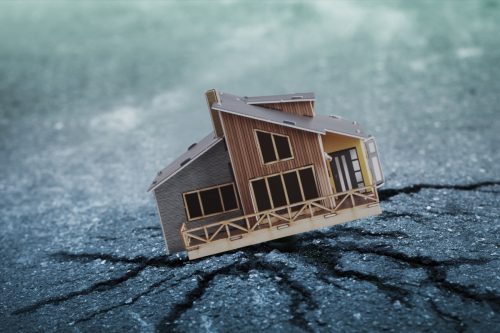
Earthquakes can range from minor tremors that are barely noticeable to building-toppling ground-shakers that cause massive destruction. But it’s an inevitable part of life for those who live in countries such as China, Indonesia, Iran, and Turkey, which are some of the most earthquake-prone places on the planet.
However, according to the USGS, Japan records the most earthquakes in the world.
26. There are around four quadrillion quadrillion bacteria on Earth.

Not all bacteria are bad. In fact, some of those itty-bitty biological cells are actually good for us and aid the world in various and complex ways. And that’s nice to know, considering there are around four quadrillion quadrillion individual bacteria on our planet, according to NPR.
27. People who are currently alive represent about 7 percent of the total number of people who have ever lived.

Here’s another world fact to keep in the back of your mind: According to the Population Reference Bureau, since the time Homo sapiens first hit the scene 50,000 years ago, more than 108 billion members of our species have been born. And a large chunk of that number is alive right now.
According to the bureau, the number of people alive today represents a whopping 7 percent of the total number of humans who have ever lived.
28. Muhammad is thought to be the most popular name in the world.

Step aside John, James, Mary, and Jane—the most popular name in the world is believed to be Muhammad. According to the BBC, a majority men and boys around the world share this name.
The popularity is thanks to a Muslim tradition of naming every firstborn son after the Islamic prophet.
29. Only two countries use purple in their national flags.

The flag of Nicaragua features a rainbow in the center that includes a band of purple, while the flag of Dominica boasts a picture of a sisserou parrot, a bird with purple feathers. These elements make them the only two flags in the world that use the color purple.
30. Africa and Asia are home to nearly 90 percent of the world’s rural population.

Not everyone lives in a booming city or sprawling suburb. Many people still make their homes outside of bustling locations—especially in India, which has the largest number of people living in rural areas (approximately 893 million people live outside of the city), according to Reuters.
China also has an impressively large rural population, with 578 million living outside of major centers.
31. The most expensive coin in the world was sold for more than $7 million, securing itself a place in the Guinness Book of World Records.

The 1933 Double Eagle was a $20 U.S. coin made of gold that never went into circulation. A few of the coins were made, but most were destroyed—save for nine that were presumed stolen by U.S. mint workers.
After years circulating the globe and falling into the hands of a few notable owners—including the king of Egypt—one of the coins was auctioned off at Sotheby’s in 2002 for a stunning $7,590,020. That set the Guinness World Record for the most expensive coin ever sold at auction.
32. The world’s largest man-made oyster reef was created in Maryland.

Due to overfishing and disease, the oyster population in Maryland’s Chesapeake Bay was seriously suffering. But thanks to dedicated work by scientists at the Horn Point Laboratory, the Army Corps, the National Oceanic and Atmospheric Administration, and the Nature Conservancy, the state is now home to the world’s largest man-made oyster reef.
Home to more than one billion oysters, the area is a no-fishing zone, which will hopefully give the population a chance to recover.
READ THIS NEXT: 125 Facts That Will Make You Feel Instantly Smarter.
33. A record-breaking 92 countries competed in the 2018 Winter Olympics.

Every four years, the Olympic games bring together the most competitive athletes from around the world. And when the PyeongChang Winter Games were held in 2018, 2,952 athletes were expected to show up from a total of 92 countries.
That beat the previous record of the 2,800 athletes from 88 countries who participated in the Winter Games in 2014.
34. South Sudan is the youngest country in the world.
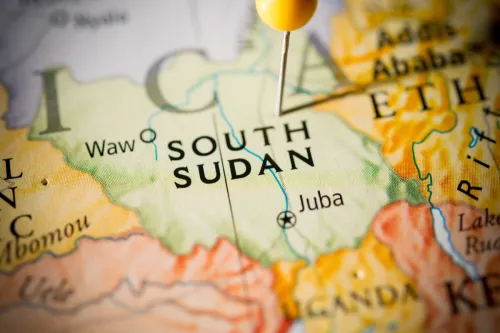
Some countries are hundreds of years old, while others can trace their nation’s history back for thousands of years. But South Sudan in North Africa just gained its independence from Sudan in 2011, which currently makes it the youngest country in the world.
35. People 60 years and older make up 12.3 percent of the global population.

Although the majority of the human population is currently under 30 years old, there are still plenty of older folks among us. In fact, over 12 percent of people on Earth are 60 years old and older.
That number is expected to reach 22 percent by 2050.
36. There are more than 24 time zones around the world.
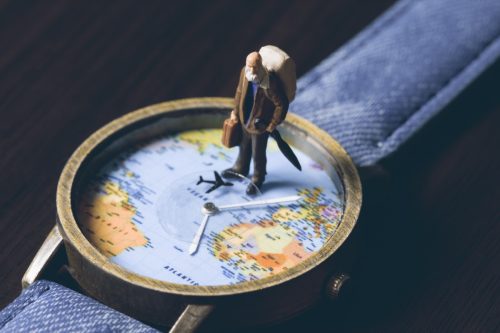
If the Earth’s time zones were each one hour apart, then we would have 24 time zones, which sounds pretty straightforward. However, the situation is a little more complicated than that.
Since many time zones only differ by 30 or 45 minutes, they don’t fit into a neat and tidy 24-hour span, which means that there are more than 24, though it’s hard to say exactly how many.
37. It’s estimated that Sweden has more islands than any other country.
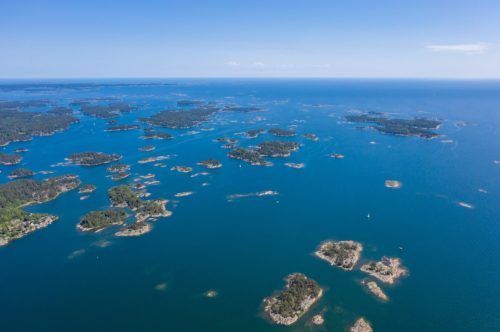
With 221,800 islands, Sweden is thought to have more islands than any other country in the world. Only about 1,000 of them are inhabited.
38. There are 43 countries that still have a royal family.

The British royal family may be the most famous royal family on the planet, but there are still plenty of other nobles out there. In total, there are 28 royal families who rule over a total of 43 countries around the world, including Japan, Spain, Swaziland, Bhutan, Thailand, Monaco, Sweden, the Netherlands, and Liechtenstein.
39. California is home to the “Artichoke Capital of the World.”
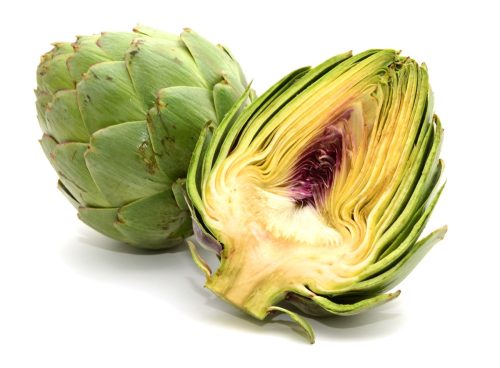
Castroville is a rural town in California that grows a lot of artichokes (and other vegetable crops), thanks to the fact that the area enjoys ideal weather year-round.
Because of this, it grows 99.9 percent of all commercially grown artichokes, and has even been nicknamed the “Artichoke Capital of the World.”
40. All giant pandas in zoos around the world are on loan from China.

The panda at your local zoo may look like it’s at home in its cozy sanctuary. But unless you live in China, the pandas that you’re seeing are just visiting. That’s because every one of the gentle giants in zoos around the world is on loan from China.
Yes, they’re technically the property of the government of China, according to Vox.
41. The “most typical human” fits this description.

According to a study developed for National Geographic in 2011, the world’s “most typical” person is right-handed, makes less than $12,000 per year, has a mobile phone, and doesn’t have a bank account.
READ THIS NEXT: 40 Facts So Funny They’re Hard to Believe.
42. Canada has 9 percent of the world’s forests.

Our neighbors to the north boast 396.9 million hectares of forests, or 9 percenet of all of the forest area in the entire world, according to Natural Resources Canada.
43. The red-billed quelea is the most common bird on Earth.
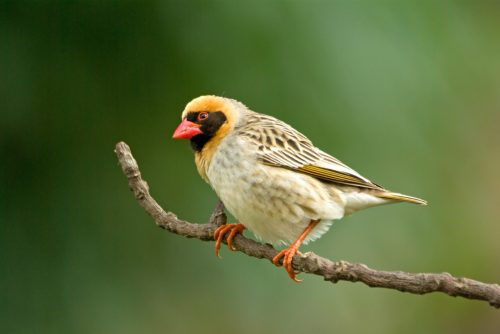
There may not be any red-billed queleas in your neighborhood, but that’s not because there isn’t an abundance of them. These birds, which live in sub-Saharan Africa, are considered agricultural pests because their massive flocks can obliterate entire crops.
Although their numbers fluctuate, there are around 1 to 10 billion queleas, which leads scientists to believe that there are more of them than any other bird on Earth, according to Audubon.
44. There’s a website that tracks the world’s population in real-time.
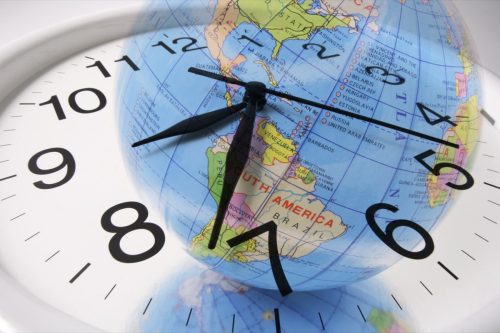
As of the time of this writing, the overall human population is estimated to be more than 8 billion people. And if you want to watch that increase in real-time, you can tune into the World Population Clock, which shows the upticks and downticks as babies are born and people die. You can also see the current populations of different countries.
45. Around one in every 200 men are direct descendants of Genghis Khan.

During his lifetime between 1162 and 1227, Genghis Khan fathered countless children. And while we may never know exactly how many offspring the leader of the Mongol Empire had, scientists now believe that around one in every 200 men—AKA 16 million people—are direct descendants of his.
46. Utrecht is the most bike-friendly city in the world.

Many cities around the world are trying to figure out how to accommodate cyclists and encourage more residents to use the environmentally friendly mode of transportation.
That’s why Utrecht has become such a role model; according to the Global Bicycle Index, it’s the most bike-friendly city in the world.
47. Forty-one countries recognize sign language as an official language.

There are estimated to be 72 million deaf people around the world. There are also about 300 different sign languages—including American Sign Language and International Sign Language—as well as 41 countries that recognize them as an official languages.
48. The global adult literacy rate is around 86 percent.

With each generation that passes, more and more people are learning how to read, according to UNESCO. These days, around 86 percent of adults around the world can enjoy a book on their own.
UNESCO also explained that their data shows “remarkable improvement among youth in terms of reading and writing skills and a steady reduction in gender gaps.”
49. There are only two countries with names that begin with “The.”
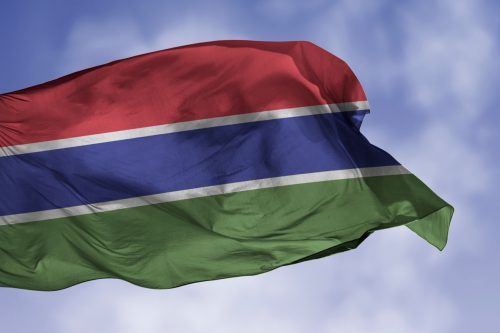
You might find yourself saying “the” before various countries and place names when referring to them, thanks to grammar and common pronunciation, which is why we say the United States or the Maldives.
However, only The Gambia and The Bahamas formally include “the” in their names.
50. All the ants on Earth weigh about as much as all the humans.
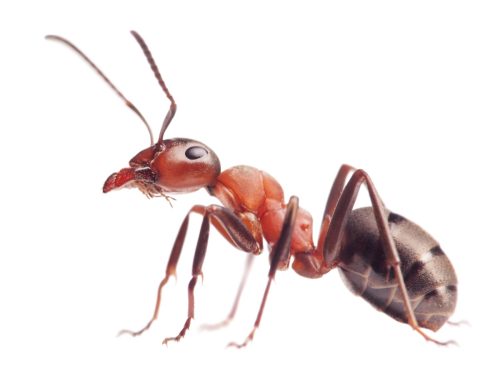
The total population of people who are alive on Earth hasn’t even hit 8 billion. At the same time, there are 10 quadrillion (10,000,000,000,000,000) individual ants crawling around at any given time. According to wildlife presenter Chris Packham, who appeared on the BBC in 2014 to discuss this, when combined, all of those ants would weigh about the same as all of us humans.
51. The oceans contain almost 200,000 different viruses.
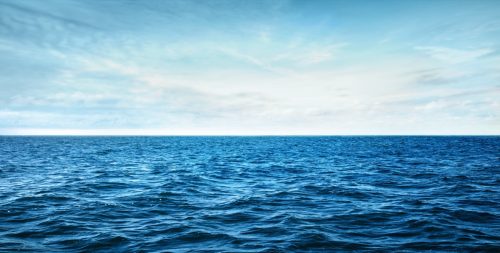
The next time you feel like taking a dip in the big blue ocean, you might not want to think about the fact that the seemingly pristine water is home to almost 200,000 different kinds of viruses.
While this may sound scary, Matthew Sullivan, a microbiologist at the Ohio State University, told CNN, “Having that road map [of what viruses exist] helps us do a lot of the things we’d be interested in to better understand the ocean and, I hate to say it, but maybe to have to engineer the ocean at some point to combat climate change.”
READ THIS NEXT: 50 Summer Facts That’ll Make You Even More Excited for the Season.
52. New Zealanders have more pets per household than any other country.

People who live in New Zealand seem to love having at least one animal companion around. That’s why 68 percent of households in the country have a pet, which is more than any other nation in the world.
Americans also happen to love furry friends, which is why more than half of all U.S. homes have either a dog or cat (or both).
53. Tokyo is the world’s largest city with 37 million inhabitants.

Tokyo is a booming city—not only by Japanese standards but also compared to cities around the world. With around 37 million people living in the Tokyo metro area, it’s the world’s largest city when it comes to population size.
The next largest city is Delhi, India (population of 29 million), followed by Shanghai, China (population of 26 million).
54. Interpol was founded in 1914 when legal professionals from 24 countries got together to discuss catching fugitives.
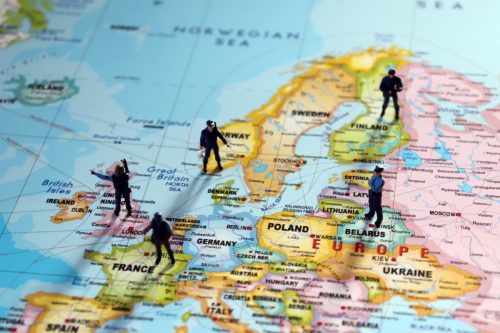
These days, Interpol (or the International Criminal Police Organization) may be well-known for tracking down outlaws around the world. But the group dates all the way back to 1914 when the International Criminal Police Congress was held in Monaco.
That meeting saw police and judicial representatives from 24 countries get together to improve contacts between police forces in different countries to increase the effectiveness of international investigations.
55. Nearly two people die each second.

While four babies are born on Earth every second, it’s estimated that around two people pass away at the same time. That means that 106 people die each minute, 6,392 people die each hour, 153,424 people die each day, and 56 million people die each year. Sorry, folks—not all interesting facts are fun!
Wrapping Up
That’s it for our list of world facts, but be sure to check back in with us soon for even more trivia! You can also sign up for our newsletter to enjoy hit pieces on health, entertainment, and travel.
- Source: https://www.mountwashington.org/about-us/history/world-record-wind.aspx
- Source: https://www.ncdc.noaa.gov/paleo-search/study/32292
- Source: https://journals.ametsoc.org/view/journals/bams/102/2/BAMS-D-20-0101.1.xml
- Source: https://www.pnas.org/content/118/13/e2021442118
- Source: https://www.pnas.org/content/117/51/32627
- Source: https://www.cell.com/current-biology/fulltext/S0960-9822(20)31267-7
- Source: https://www.nature.com/articles/srep12150
- Source: https://www.usgs.gov/faqs/which-country-has-most-earthquakes
- Source: https://www.nrcan.gc.ca/our-natural-resources/forests-and-forestry/state-canadas-forests-report/how-much-forest-does-canada-have/17601
- Source: https://www.audubon.org/news/what-most-abundant-wild-bird-world
- Source: https://www.interpol.int/en/Who-we-are/What-is-INTERPOL